When my wife and I first started dating back in 2004, we would seek out places to spend some time together. She lived at home with her parents, and I lived in a college dorm, and since we weren't the nightclub type, we'd often spend time in the afternoon and evening together walking around a store or mall. Remember when you actually left your house to shop for things? Quite often, we'd stop and have dinner at a restaurant rather than eat with her parents, or worse, the college cafeteria.
We had several places we would frequent, but if you were to ask each of us separately what our favorite of that era was, the answer would be the same...
Bennigan's!
We must have gone to the Deer Park, New York location a hundred times. When that closed and became a Buffalo Wild Wings, we started going to the Hauppauge franchise by the Long Island Expressway. Unfortunately, a bad experience there with a manager who blamed us for his own staff's shortcomings caused us to never go back. Shortly after, the location closed and became an Applebee's.
As a young kid, I can vaguely remember my parents taking me to a Bennigan's, likely the one in New City, New York. I remember it was a long drive (probably 20 minutes), and we had gone out for some other reason and stopped at the Bennigan's on the way home. I remember it was cold and raining and I didn't feel well. I didn't really want to be there, but I did go home with this great little promotional plastic Halloween witches cauldron.
I used that cauldron for years to hold candy and other knick-knacks. I also clearly remember the step up into the seating area and the brass and wood handrails. It's funny what sticks out in your mind all these years later, isn't it? This had to be around 1991 or 92, and I would have been 7 or 8. It's really the only time I can remember going to Bennigan's until college.
So, with fond memories, let's take a deeper look as we start another journey into the history of another Restaraunt of YesterYear: Bennigan's!
We have to start in 1966 with a restaurant called "Steak and Ale." Steak and Ale was an American chain of casual dining restaurants founded in 1966 in Dallas, Texas, by Norman Brinker. Famous for its dimly lit Tudor-style dining rooms, Steak and Ale considered itself an upscale steak house at family restaurant prices. It was the pioneer for the casual-dining steakhouse, similar to a modern-day Longhorn Steakhouse. In fact, it was such a pioneer in that field that several executives who worked for Steak and Ale went on to run other large national restaurant chains.
Steak and Ale was famous for menu items such as the signature herb-roasted prime rib or the New York strip steak. Hawaiian chicken and spicy grilled chicken pasta were also favorites at the restaurant. They featured an unlimited salad bar and choice of soup with your entree, along with complimentary drink refills and endless baskets of honey-wheat bread. The restaurant also featured a $6.99 lunch menu during the 1980s and in the 90s to boost poor sales, creating the concept of "Early Evening Dining" instead of using the term "Early Bird," which inferred elderly discount seekers. The "Early Evening" concept featured a free drink and dessert with the purchase of an entree from a limited menu. Popular dessert selections were strawberry sundown cake, twilight triple fudge, and spice cake. One very popular campaign was the wine samples at just 25 cents a glass.
Steak and Ale remained an independently run chain until 1976, when the Pillsbury Corporation purchased them. At the time of the sale to Pillsbury, S&A had 113 locations under the names Steak and Ale and The Jolly Ox. Steak and Ale used the name Jolly Ox in locations, mainly in the Southern Bible Belt, that forbid references to alcohol and liquor in a restaurant name. Once the sale was complete, Pillsbury folded S&A into the grouping of restaurants it owned at the time, such as "Poppin' Fresh Pies," "Burger King," and shortly after "Bennigan's."
Bennigan's began life in 1976 in Atlanta, Georgia, as part of the Pillsbury Corporation, not coincidentally the same year that Pillsbury purchased Steak and Ale. Norman Brinker of Steak and Ale is considered the creator of the family-friendly Irish pub-themed chain named Bennigan's.
By the early 80s, Bennigan's was recognized as one of the best mid-range casual dining franchises across the United States. In the 80s, a new term for this style of restaurant began being thrown around: "a fern bar." Known for being gathering places for young, upscale "yuppies" and decorated with Tiffany-style lamps, ferns, and other greenery. Bennigan's, Ruby Tuesday's, and TGI Friday's are some examples of popular fern bars of the 80s and 90s. By the start of the 90s, the term fern bar was used disparagingly to refer to a seedy place where singles would often hang out and hit on other patrons. This may have been the reputation, but the truth was that most often, these types of restaurants were lunch-hour meetings or after-work hangouts.
In 1982, Pillsbury spun Steak and Ale and Bennigans off into their own independent company called S&A Restaurant Corp. Steak and Ale grew to 280 locations by the end of the 1980s. In 1983, however, Norman Brinker left the Pillsbury group and led a mass exodus of executives from Steak and Ale and Bennigans to purchase a small regional chain that focused on gourmet hamburgers, now known as Chili's.
Meanwhile, Bennigan's continued to expand across the United States and worldwide, opening in fourteen countries. At its peak, there were over 300 Bennigan's locations worldwide.
In 1988, Metromedia purchased the company, and in 1993, it was merged with the Metromedia-owned chains Bonanza and Ponderosa Steakhouses under the S&A Restaurant Group brand. If your so inclined, please read my previous article about The Ponderosa and Bonanza Steakhouse by clicking HERE.
My favorite food from Bennigan's menu was the Quesadilla Burger. My wife would always order the Monte Cristo or Kilkenny's Country Chicken Wrap. The Turkey O'Toole or Buffalo Chicken Sandwich were always good options, too.
A Quesadilla Burger was pretty much a cheeseburger inside of a tortilla.
The Monte Cristo was a giant sandwich made with turkey, ham, and Swiss and American cheese, with a third slice of bread in between. The sandwich was then dipped in egg batter and fried to a golden brown. Amazing.
The Kilkenny's Country Chicken Wrap had an Irish-sounding name but was anything but Irish. It was basically chicken fingers, honey mustard, bacon, cheese, some lettuce, and tomatoes in a tortilla, and it was easily Lauren's favorite meal at Bennigan's.
The Turkey O'Toole offered generous helpings of sliced turkey on a pretzel bun with swiss cheese and honey mustard.
Bennigan's Buffalo Chicken sandwich, if I remember right, was one of the better Buffalo Chicken sandwiches. Most restaurants have one on their menu, but Bennigan's was a thick piece of juicy chicken, and the Buffalo sauce wasn't overly hot, which suited my liking better.
Unfortunately, these favorites of ours couldn't save Bennigan's. After 1993, things hummed along for the business, but Bennigan's slowly began to falter. Things fell off a cliff into a nosedive, and the sudden collapse was considered "epic" by industry experts.
According to a 2012 USA Today article, "In the past 10 years, no major restaurant has lost as much of its business as Bennigan's." Bennigan's parent company (S&A Restaurant Corp) filed Chapter 7 liquidation in 2008. Overnight, 150 corporate-owned restaurants closed for good. 100 franchises survived, but barely. When most companies file bankruptcy, it's under Chapter 11, which allows them to reorganize and restructure debt. Chapter 7 liquidates the company altogether. The fact that Bennigan's filed Chapter 7 right away meant they were so in debt they couldn't continue operations, and things were really, really bad.
Every Steak and Ale restaurant closed upon the bankruptcy filing, following several years of slow closures from areas like New York, Connecticut, and Pennsylvania.
Industry analysts described Bennigan's failure to distinguish itself from other fern bars, like TGI Fridays, and couldn't muster up enough consumer loyalty. Even though it was Irish-themed, the menu would be nearly identical to its competitors: steaks, burgers, and fried appetizers like quesadillas, potato skins, and mozzarella sticks. You could find those food items anywhere and, toward the end, often better quality.
With so many other chains in the same category, you have to ask yourself, is there really a difference between brands like Chili's, Applebee's, TGI Friday's, Ruby Tuesday's, or Bennigan's? It comes down to brand loyalty at that point. If you have the desire to eat at a casual dining restaurant, most people typically go to the cheapest ones. With so many competing brands, they continued to reduce prices and attract customers. Unfortunately, cutting back on prices also meant cutting back on quality.
You may even have to consider Bennigan's a victim of its own success. They were one of the pioneers of the "fern bar" trend, and when so many other brands copied the business plan and made it better, Bennigan's just couldn't keep up.
Ron Paul, not the politician but the president of the consulting firm Technomic, once said that "To some extent, they've become victims of their own success—a mature category with too many units and not enough differentiation, at least in the eyes of consumers." Like many similar chains at the time, it's possible Bennigan got lost in the sea of giant portions and teams of waiters singing signature restaurant birthday songs.
Also, Bennigan's just stopped being a "cool" hangout after work. The brand never adapted well to the changing standards of the Millenial Generation, mainly eating fresh, organic, local, and sustainable. Sales were eroded by competition at newer "fast-casual" restaurants like Chipotle and Panera Bread that the younger crowd favored. Current Bennigan's CEO Paul Mangiamele once said, "They lost the brand's DNA... it's an insidious disease called brand drift." Bennigan's continued to offer heavy, fried items, and throwing some lettuce in a wrap with chicken fingers isn't the younger generation's idea of healthy food.
At the very start of this article, I mentioned that my wife and I never returned to the Bennigan's in Hauppauge, New York, because of an incident with a manager. We were seated for lunch for over 30 minutes, and the waiter never even came over to take our drink order, let alone for our entire meal. We asked several other members of the waitstaff to send him our way, but not once did they even offer to complete the order themselves. After 40 minutes, we walked out. The manager met us at the door and asked if we had enjoyed our meal, and we told him the story very calmly and said maybe today just wasn't meant to be. He grew agitated and blamed us, saying we must have had no patience and clearly he was busy and had we "bothered to wait longer," he would have eventually gotten to us. He wasn't busy; there were maybe 4 or 5 other tables with customers in the whole place.
That was our last interaction with a chain we had loved so much.
We weren't alone in interactions like that. In a Mashed.com article about Bennigan's bankruptcy, they cite a decline in good service as one of the leading causes of the restaurant's eventual closure. Food would take longer to arrive, and the facility itself needed an upgrade with scuffed or broken furniture and old fixtures. Restaurant consultant Bill Marvin told Newsweek in 2008 that "Bennigan's is just one more place to eat. The thing that's been missing in the hospitality business is the hospitality."
Bennigan's website was also lackluster. At a time when people were becoming used to having technology more advanced than the space shuttle in their front pocket, the website was so basic it just listed locations and store hours. As a chain itself, Bennigan's didn't publish an app for smartphones until 2018! That's unheard of and woefully behind the times.
One final factor that I think contributed to the sudden demise was just a result of bad timing. In 2008, the "Great Recession" hit America, and many families began watching their wallets. Often, when money is tight, the first luxury to go is eating out.
As previously mentioned, in July of 2008, S&A Restaurant Corp filed Chapter 7 bankruptcy and immediately closed the 150 corporate-owned locations. 138 franchised restaurants hung on for a few more years, but that number eventually dwindled to less than 70.
Atalaya Capital Management purchased the Bennigan's name out of bankruptcy and immediately hired Paul Mangiamele to revive the brand. Mangiamele personally bought the business outright in 2015 and in 2018 reopened three restaurants in Texas, Ohio, and North Dakota. He, and the newly re-christened Bennigan's, experienced record sales. The locations aren't nearly as large as the original but are getting double the amount of customers. Mangiamele and company have also made a mark on international markets.
The new Bennigan's is focused on smaller markets. As Mangiamele explains, "If I open a Bennigan's in Manhattan, it's ho-hum, another restaurant... you open in Monahans, Texas, and it's the biggest event of the century." In smaller markets, Benningan's also becomes a desirable employer and, in turn, doesn't have to compete with the demands of a big city workplace.
Bennigan's itself has become a pop culture icon, appearing (or spoofed) in several movies and television shows.
At the beginning of "Office Space," Jennifer Aniston works at a bar called Chotchkies. While I'll admit it probably most resembles a TGI Friday's, the fictional Chotchkies was representative of the "fern bar" family establishment that Bennigan's created and the ridiculous atmosphere of more "flair" as it juggled the young professional and family clientele.
Another very famous spoof of Bennigan's, is the 2005 Ryan Reynold's movie "Waiting." Director Rob McKittrick worked in a Steak and Ale in Orlando and a Bennigan's in Sarasota, Florida, during the 90s. The fictional restaurant in the film, "Shenanigan's," is clearly a take on the day in a waiter's life at Bennigan's. It's also a pretty funny film, although I haven't seen it in years, so it may not hold up today.
On the Comedy Central show "South Park," Bennigan's makes several appearances as Butters' favorite place to eat. First seen in the episode "Butters' Very Own Episode," it was also used again in later episodes "Professor Chaos" and "Canada On Strike."
In 2021, Bennigan's currently has 11 locations in the United States, spread throughout Texas, Iowa, Illinois, Florida, Michigan, Ohio, and North Dakota. The chain also has 14 locations worldwide, with restaurants in places like Qatar, Mexico, and Cyprus.
Living in New York, I doubt I'll ever get the opportunity to eat in one of the new Bennigan's again. It's a shame because we have so many fond memories of the company during our college years. Perhaps, in this case, the memories are best left alone.
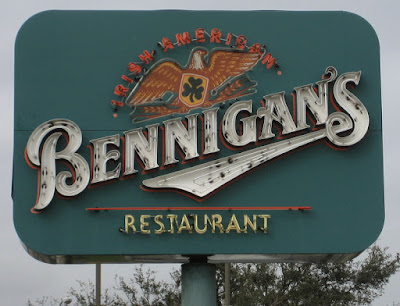










.png)
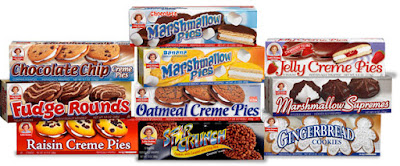
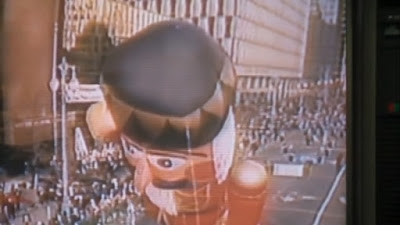

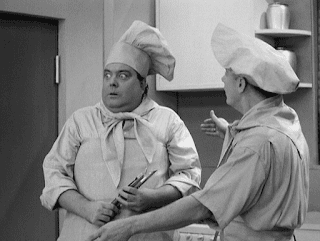
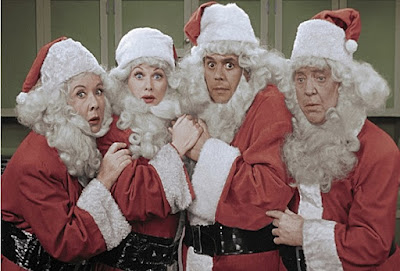
Comments